What's the Right Wood Floor Installation for You?
http://decor-ideas.org 12/25/2014 02:13 Decor Ideas
Installing a wood floor? Whether you’re using hardwood, laminate or even plank tiles, once you’ve picked that beautiful product, you’ll have to make another important decision: which way to install it. While straight and horizontal patterns are the most popular, there are many more options, and one might be better for your project. Here are the pros and cons of some of the most popular installation methods for wood flooring to help you make the best choice for your home, budget and style.
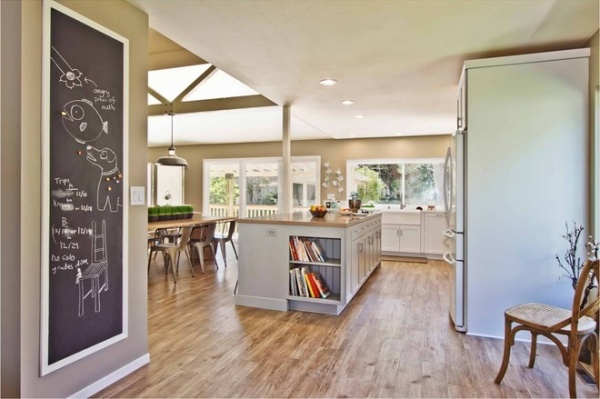
Straight
The most common strategy when picking a wood flooring pattern is to consider two basic orientations. Assuming the wood will run in straight lines following the peripheral walls of a rectangular room, the flooring can run approximately north-south or east-west.
Generally, choosing the orientation that follows the longest walls will emphasize the longer dimension, making the floor area appear bigger.
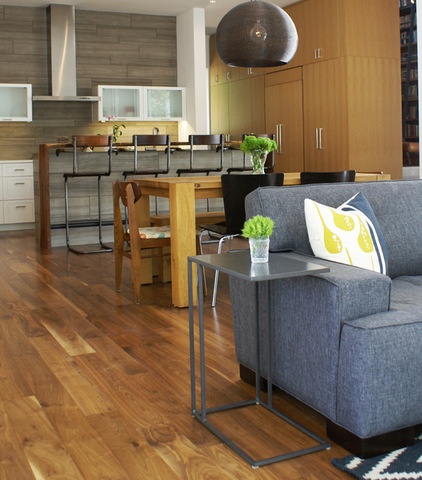
Pros:
Straight patterns are simple to lay out. Installers can use one wall as a starting point and move across the room in simple strips.Creates little waste, as it involves no complex cutting patterns. (Most boards can usually be used in full.)
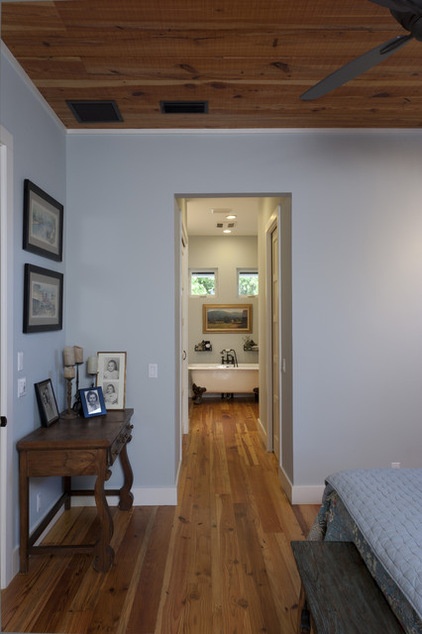
Can create long, continuous lines, especially when run throughout connected rooms or in an open space.
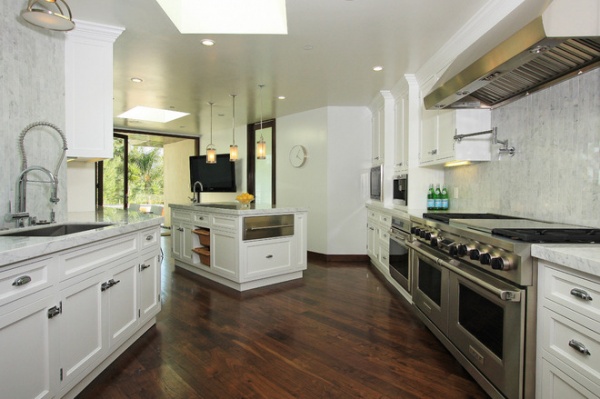
Cons:
A straight pattern is common, which can make it less exciting for those who prefer a unique look.It’s simple to install only in rectangular rooms. A complex room shape can force this pattern to become partially diagonal or to change directions.
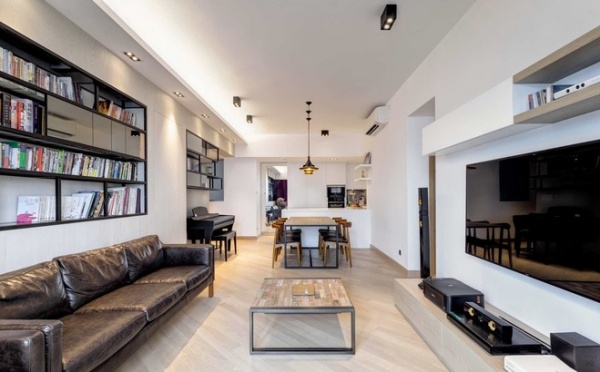
Diagonal
A diagonal wood layout typically creates the longest lines, and thus makes a space look its largest. This makes it a popular choice for open floor plans in small units, such as condos and apartments, where expanding the look is key for attracting buyers and creating an airy feel.
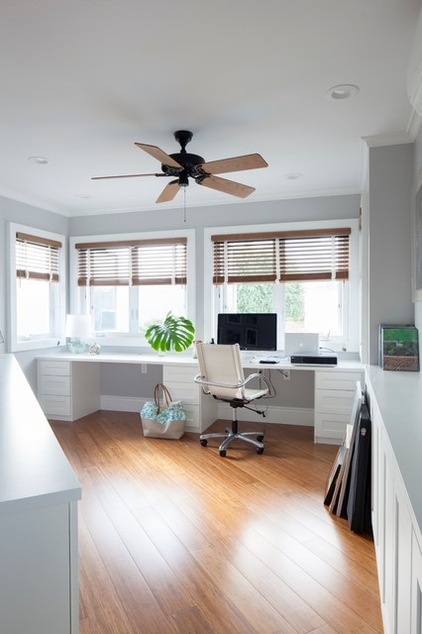
Pros:
Taking the wood from corner to opposite corner highlights the longest line of a room and maximizes the lengthening effect.By not following traditional shapes, this pattern prevents the floor from looking off in rooms with unusual shapes and angles. Diagonals naturally read as dynamic and energetic.
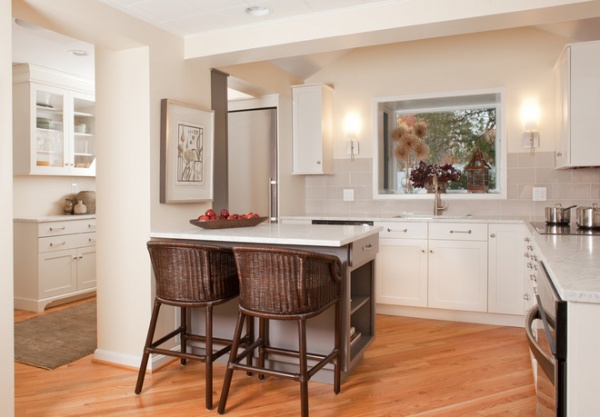
Cons:
Creates more waste, because many boards will need to be mitered at the edges rather than meeting at simple parallels.Installers won’t have an easy starting point and will need a bit more skill, especially for a pattern at an odd angle (one other than the common 45-degree angle).
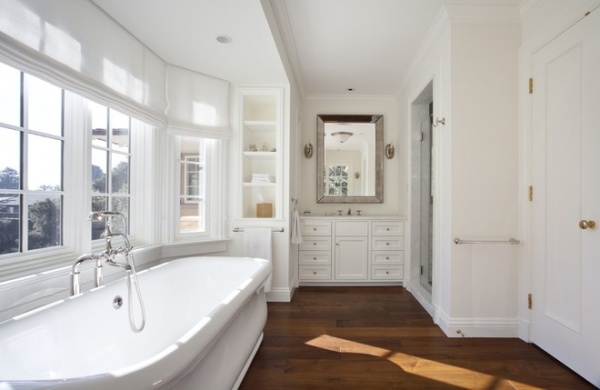
Perpendicular
Although technically a straight pattern, it is far less common to intentionally install boards so that they run perpendicular to the longest lines of a room. One con is that it requires many more cuts (meaning more waste and labor time), but it can help widen a tunnel-shaped room by emphasizing the little width there is, and can also add a warmer, rustic appeal by emphasizing the individual boards.
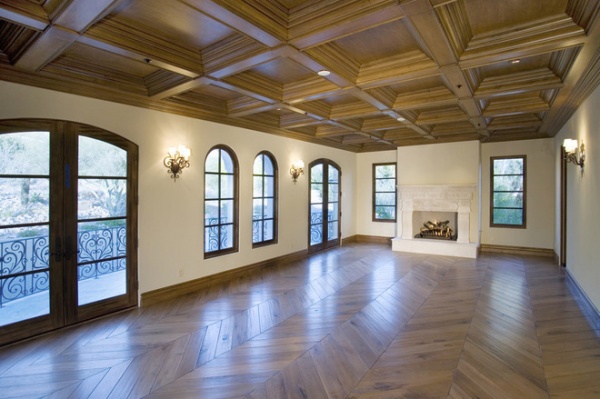
Chevron
A chevron pattern immediately conjures a sense of the wealth and grandeur of historic estates, making it a fashionable choice for modern, contemporary and transitional homes; it has been especially trendy in recent years.
A true chevron pattern has boards meeting at mitered angles (usually 45 degrees), creating diagonal zigzags along one axis but long, uniform stripes along the other axis.
(Notice how the long lines created by the parallel boards here follow the long axis of the room.)
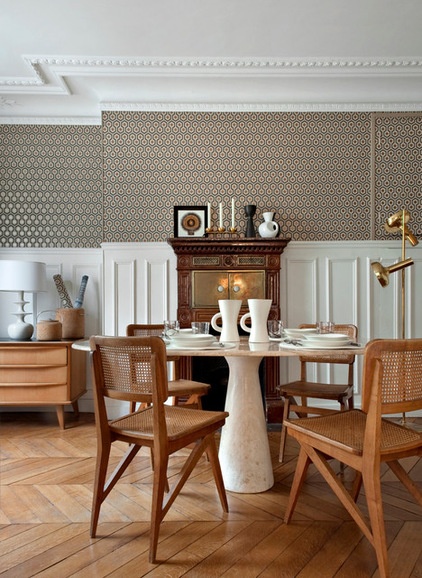
Pros:
Creates straight lines to help lengthen a room while also creating drama with engaging diagonals.Arrows formed where boards meet create an even more dramatic feeling of motion that keeps the eye moving about the space.Can create a lot of visual interest with a less exotic wood, which can sometimes save costs compared with using a rarer material.
Cons:
Requires every board to be cut, creating waste and taking significantly more time than straight patterns.In a small space, the look can be either lost (at a large scale) or very busy (at a small scale), depending on taste.
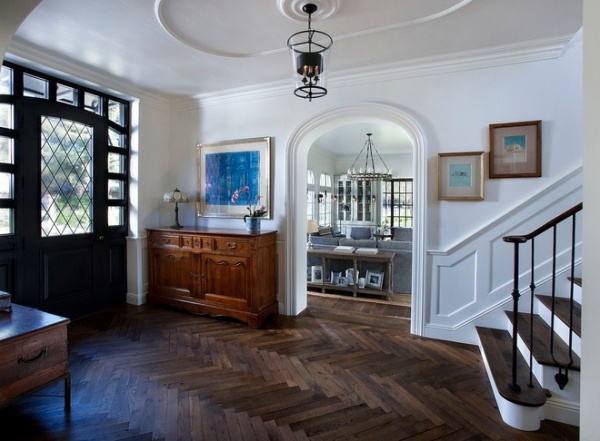
Herringbone
Similar to a chevron, a herringbone layout creates diagonal zigzag patterns, but with unmitered edges to create a more broken pattern.
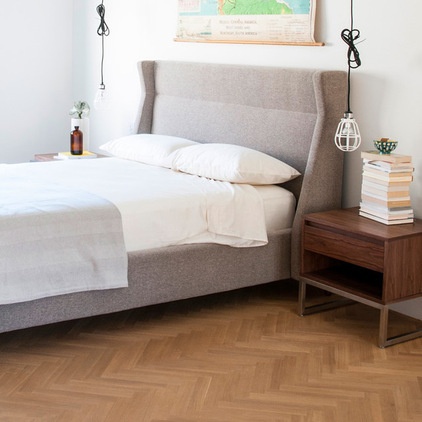
Pros:
Takes time to install but creates less waste than a chevron, because it requires fewer cuts.Creates a subtler zigzag than a chevron for a more classic and rugged, and possibly less trendy, look.
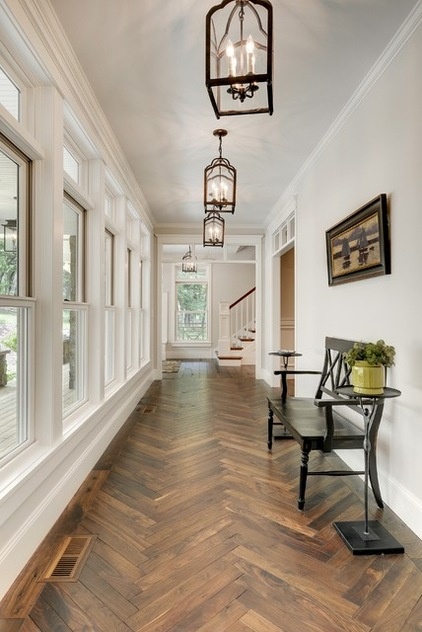
Cons:
Does not emphasize length as strongly as a chevon.Still requires mitering where the boards meet the walls.
See more on chevron and herringbone patterns
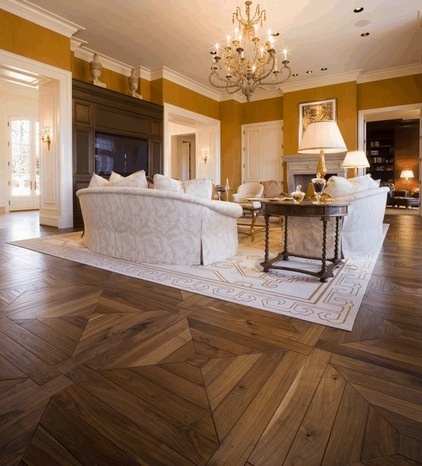
Parquet
Technically a parquet floor is any intricate pattern or design, and not just the swirling-square style that was popular a few decades back and has more recently fallen out of favor.
Generally, many smaller patterns currently feel dated, but larger patterns can read as classic and custom, like herringbone and chevron but rarer.
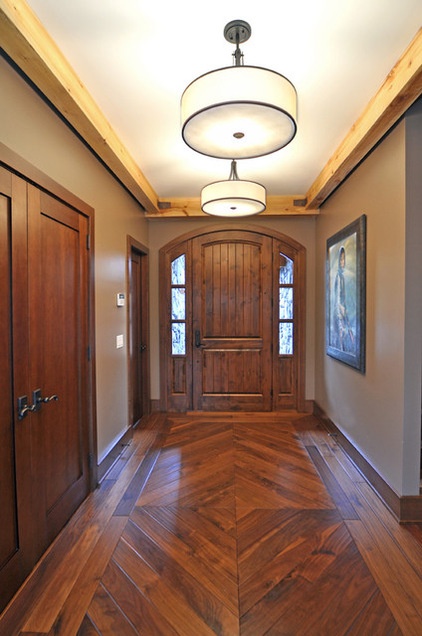
Pros:
Complex patterns will be unique, for the most exclusive look, without necessarily costing more than other patterns, like chevron.Patterns can accent individual spaces and define areas within a room.
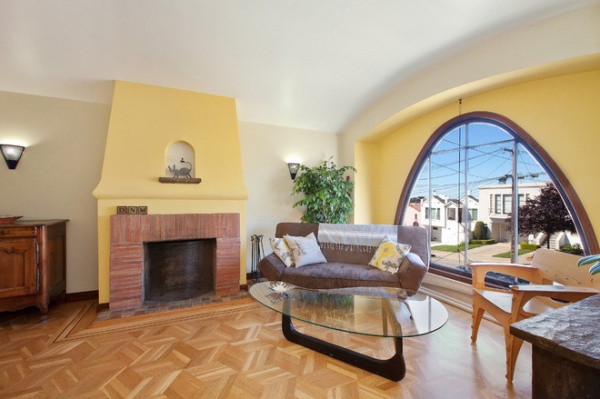
Cons:
Busy patterns require many cuts and a lot of time to install.A unique pattern can hurt resale value if it speaks to very specific tastes or feels like part of a past trend.Learn more about parquet flooring
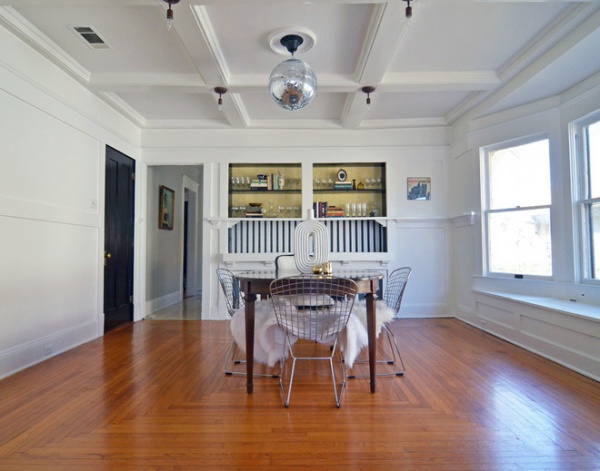
Square
A square pattern can be thought of as a large, simplified parquet. The installer follows the outside edges and works toward the center (with mitered or unmitered corners), so this pattern is easier to lay than some others and offers a good compromise between busy and straight.
Pros:
Creates a standout statement especially suited to rooms with one central feature, such as a dining room or foyer.
Cons:
Must be carefully planned to reach a neat center, because most rooms are not perfectly square.
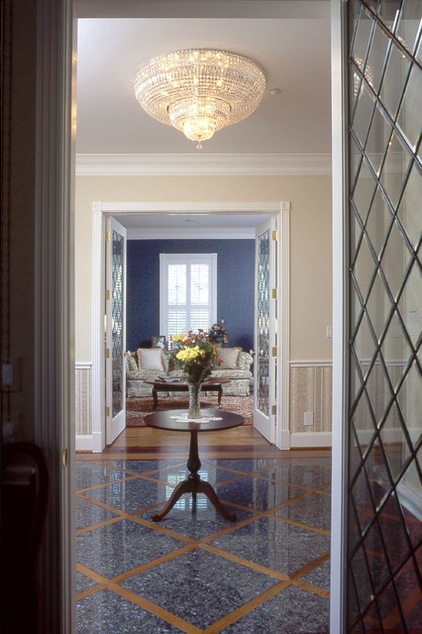
Inset Pattern
Pros:
Creates beautiful custom effects with rich textural appeal.Patterns can be used to break up a floor into sections that best suit the individual room while still linking spaces through a common material.
Cons:
Purchasing multiple materials increases costs.Typically requires advanced skill to properly lay multiple materials perfectly flush and straight, or in intricate patterns.
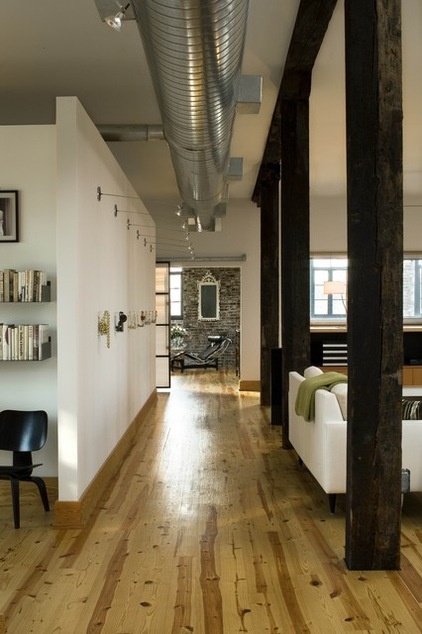
A Few Last Thoughts
It’s important to consider how your material will interact with the pattern you choose. A busy grain will look dramatic even with a simple layout and can look almost overwhelming when applied to a more complicated plan.
Generally, unless you crave maximum drama, the more high contrast the grain is in your wood, the simpler you should go with your layout.
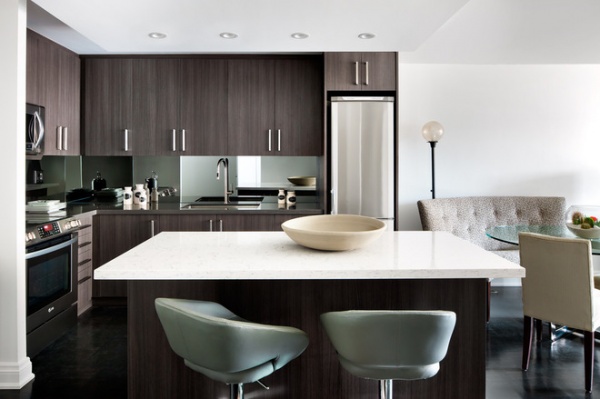
If you’re stuck with a busy or dated pattern you don’t like, take a cue from this condo renovation I completed recently. Staining a floor to a dark finish and sealing it thoroughly can virtually erase the seams between boards, preserving the inviting texture of the wood while erasing the seam lines — because sometimes the best floor pattern is none whatsoever.
More: What to Ask Before Choosing a Hardwood Floor
Related Articles Recommended












